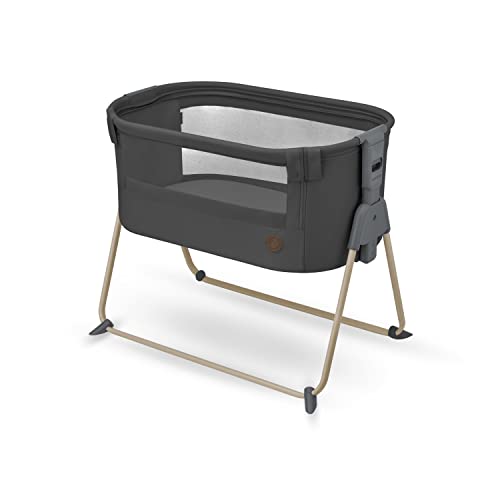The Benefits of Using a Bedside Cot for Nursing: A Comprehensive Guide
In the last few years, the concept of co-sleeping, especially using bedside cots, has actually gained much attention among new parents and caretakers. A bedside cot is a type of baby bed that is designed to safely connect to the side of an adult bed, providing a safe sleeping environment for infants while promoting ease of access for breastfeeding moms. This post will check out the numerous benefits of bedside cots for nursing, different types available, factors to consider for picking one, and regularly asked concerns.
The Advantages of Bedside Cots for Nursing
1. Improved Accessibility
Among the most significant advantages of a bedside cot is the ease of access it supplies. Nursing moms can just reach over to pick up their baby without the need to stand or move away from bed. This benefit permits:
- Quick night feedings
- Increased comfort for the mother
- Minimized threat of disturbances to both mom and baby during nighttime care
2. Promotes Bonding
Nursing is more than just a method of nutrition; it is also a chance for mothers to bond with their infants. A bedside cot facilitates this connection by permitting moms to maintain close proximity to their babies throughout sleep. This closeness can lead to:
- Enhanced emotional connection
- Increased milk production due to regular nursing
- A complacency for the infant
3. Motivates Extended Breastfeeding
The convenience of having a bedside cot motivates longer breastfeeding durations. just click the next webpage are more most likely to follow their baby's feeding hints and react without delay when they can quickly access their child. The benefits of prolonged breastfeeding consist of:
- Improved nutritional intake for the baby
- Enhanced developmental advantages
- Strengthened resistances through breast milk
4. Supports Safe Sleep Practices
Bedside cots are created with security in mind, permitting parents to preserve close supervision over their sleeping infant. By adhering to safe sleep recommendations-- such as placing the baby on their back to sleep and making sure a company bed mattress-- parents can produce a much safer environment. Features that contribute to security may consist of:
- Breathable sides to avoid suffocation
- Durable, non-toxic materials
- Adjustable heights to match the adult bed
5. Flexible Use
A bedside cot can work as both a crib and a co-sleeping plan. Lots of designs are adjustable in height or can be totally removed for use as a standalone crib when the kid grows older. This versatility offers long-lasting use and value.
Kinds Of Bedside Cots
Bedside cots come in numerous styles and styles. Below are some common types:
| Type | Description |
|---|---|
| Co-Sleeping Cribs | Full-sized cribs that can be firmly connected to the side of the parents' bed. |
| Bassinet-style Cots | Smaller sized, portable cots that fit beside the bed and are lightweight for easy transportation. |
| Convertible Baby Beds | Cots that change into various types of beds as the kid grows, often including young child and youth bed alternatives. |
| Foldable Playards | These can be utilized as both a sleep location and a backyard, easily saved when not in use. |
Factors to consider When Choosing a Bedside Cot
When picking a bedside cot, parents ought to think about several key aspects:
Safety Features
- Search for mesh sides for ventilation.
- Guarantee that the cot fulfills safety standards and regulations.
Ease of Use
- Check for adjustable height settings to align with your bed.
- Consider how quickly the cot can be moved if required.
Size and Space
- Ensure there suffices space in the bed room for the cot.
- Choose a crib that fits conveniently without taking excessive room.
Mobility
- If travel is regular, think about a lightweight design that can be easily folded and transported.
Durability and Material
- Go with top quality products that use durability and are easy to tidy.
Regularly Asked Questions
1. Are bedside cots safe for sleeping?
Yes, when utilized properly and following safety guidelines, bedside cots are normally safe for infants to sleep in. Always ensure that the cot is firmly connected to the adult bed which there are no spaces.
2. Can I use a bedside cot for a newborn?
The majority of bedside cots are developed for newborns and can accommodate them securely. Constantly check the maker's recommendations for weight limits and age viability.
3. How can I ensure my baby's safety while using a bedside cot?
To ensure safety, always put your baby on their back to sleep and routinely inspect that the cot is safely connected to your bed. Keep a clutter-free sleeping environment.
4. When should I transition my baby from a bedside cot to a crib?
Repeatedly, parents transition their child to a crib when they are around 4 to 6 months old or when they begin to roll over frequently. However, the precise timing depends upon the baby's advancement.
5. Can I use a bedside cot for multiple babies?
Bedside cots are usually created for single infants. If parents have twins or multiples, it's recommended to use different sleeping arrangements to ensure safety.
Bedside cots use numerous benefits for nursing mothers, including accessibility, security, and promoting a strong bond in between mom and child. By choosing the right type of bedside cot and considering safety functions, parents can produce a nurturing environment for their infants. As the pattern of co-sleeping continues to increase, providing a safe and soothing setup is vital for the well-being of both baby and caregiver. With the best info and resources, parents can browse this new chapter in their lives much better ready than ever.

